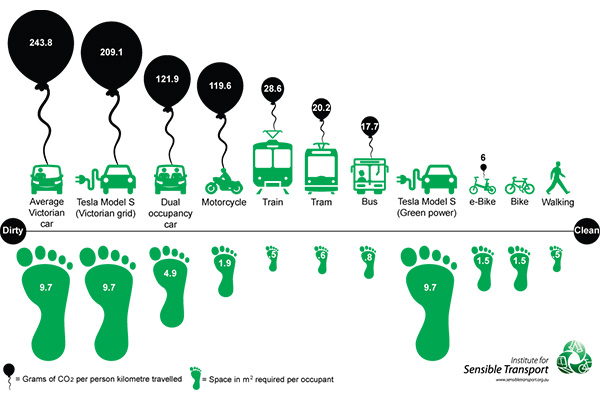Parents across NSW are calling for safer roads around schools to enable active transport. Making walking and cycling a priority has many benefits.
Residential streets in Australian towns and cities are blighted by narrow uneven footpaths (or no footpaths at all), dangerous intersections, steep kerb cuts (where they exist!), a lack of crossings and 50km/h speed limits
(Image: Bicycle NSW)
But we need to see the money
Currently, the majority of children are being driven to school due to parental fears for their safety.
Decades of car-first urban planning across Australia has come at an enormous social, economic and environmental cost. In Sydney alone, for example, 2 million car trips are made each day under 2 km in length. Yet, compared to regional NSW, with minimal active and public transport infrastructure, we’re rolling in luxury!
Overall greenhouse gas emissions from transport average 19%. And building streets for cars, not people, reinforce further car dependence. Whilst 70% of us would to bike more and drive less, our streets are dangerous by design.
- Read here about the massive social and economic burden of car-based planning, especially upon children.
- Read here about why we need to legislate for urban design and project planning that puts walking and cycling first. And driving last.
- Read here about the massive boost to businesses flowing from active transport infrastructure.
- Read here about the many benefits of cycling to work.
Funding for active transport in NSW is 100 times below what’s recommended
Yes folks. 100! The transport budget allocation in NSW for walking and cycling is just 0.2%. But the UN recommendation is 20%! Where we’re at now is a state of denial and neglect that needs a massive policy and budgetary intervention. But nice words and a few scenic shared paths are not going to cut it.
The infographic below illustrates the stark contrast between dirty and clean transport modes and the space each mode consumes. This figure uses black balloons to illustrate the emissions per person, per kilometre. And note the position of EVs compared to e-bikes, which is why we’re calling for e-bike subsidies now
Although an EV powered by renewable electricity has no tail pipe emissions, it still takes up a lot of space in our cities, contributes to the rising road toll and enable dangerously inactive lifestyles. The figures would be worse if the emission associated with vehicle manufacture were included! (Image credit: Institute for Sensible Transport)
NSW needs to embrace mode shift to achieve Net Zero
As a signatory to the Paris Agreement, Australia must cut greenhouse gas emissions to Net Zero by 2050. With any remaining emissions re-absorbed from the atmosphere by oceans and forests. Serious and sustained mode shift is required to meet targets. Researchers at the Institute for Sensible Transport developed the following graphic to show where we are and where we need to be.
Active transport needs to increase from 33% of trips (a Melbourne figure – this is well above the Australian average!) to 47%. (Image credit: Institute for Sensible Transport)
To achieve the outcomes modelled in the strong emissions reduction scenario, it is essential to provide priority for walking, cycling and public transport.
A key element of this is the reallocation of road space towards more space- and emissions-efficient modes of transport. Fortunately, Transport for NSW’s new Future Transport Strategy is very keen to see roads reconfigured to improve movement and place outcomes and encourage active transport.
Of course there are many other benefits of reducing traffic. Our streets will be calmer, quieter and safer, there will be more space for trees and people, and we will be more inclined to walk and cycle. Our streets will be Better Streets.
However, without strong leadership to get the community excited about change, we will remain stuck in neutral, wallowing in the status quo.
Hey! It’s EOFY time. Want to put your tax-refundable dollar to great work?
‘If you care about the environment, health, cost of living, social equity and childhood independence, consider supporting our bike advocacy,’ Says Bicycle NSW CEO, Peter McLean. ‘Bicycle NSW has been campaigning for safe, accessible bicycle infrastructure for almost 50 years’
Participants in the Better Streets Walk + Ride in March 2023, many on e-bikes, demonstrating the call for more bike lanes and safe, low-speed streets across NSW. Pitt Street, Sydney.
(Photo: Better Streets NSW)





